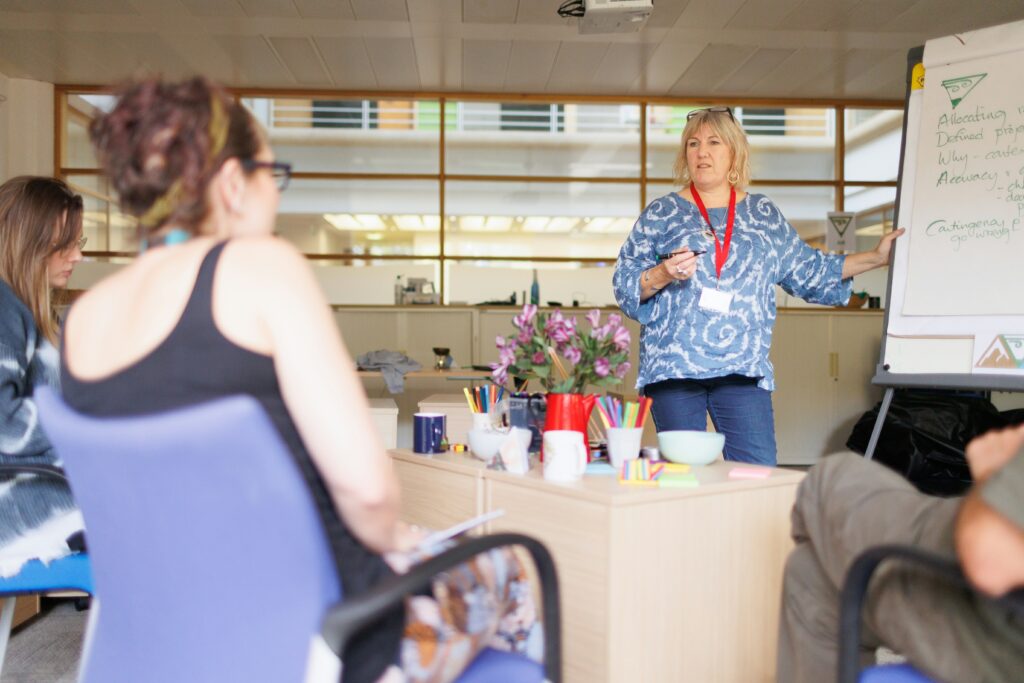A compelling opening is crucial in public speaking as it sets the stage for your presentation or speech.
You grab the audience’s attention and establish a connection in the first few moments, making them eager to hear what you say next.
The success of this initial interaction can influence audience engagement throughout your speech.
By starting strong, you captivate your listeners and build the momentum needed to carry your message effectively.
Therefore, mastering the art of the opening is essential for any successful speaker. It ensures that the audience is engaged and receptive right from the start.
The purpose of an opening statement
The opening of a speech serves as the foundation for what’s to follow, crucial for grasping the audience’s attention from the get-go.
Its main objectives are threefold: first, to captivate the audience, ensuring they are fully engaged and eager to listen; second, to establish a connection or rapport, making the audience feel involved and valued; and third, to set the tone of the presentation, providing a clear indication of the speech’s direction and mood.
13 ways to craft a strong opening statement for your speech
There are many ways to craft a memorable opening. Here are 13 strategies with examples:Use a startling statement
Begin with a fact or statement that surprises your audience, prompting them to keenly focus on what you’re about to say.
For example:
“Last year, over 60% of small businesses faced cyber attacks, yet only a fraction were prepared.”
This statistic is likely to grab attention due to its unexpected gravity and relevance.
Tell a story
Stories are universally compelling, tapping into emotions and creating a human connection.
For instance, if addressing the importance of resilience, you might start with a personal anecdote:
“Three years ago, I stood at the brink of bankruptcy. Yet here I am today, sharing my journey toward rebuilding what I lost.”
This approach draws in listeners and establishes a rapport as you’ve let them into a part of your life where you felt vulnerable.
Post a provocative statement
Engage your audience’s curiosity and invite them to think deeply by starting with a thought-provoking question.
For a speech on innovation, you could ask:
“What if the next product you invent becomes a staple in every household across the globe?”
Such a question stimulates the audience’s imagination and encourages them to consider their own potential impact.
Quote someone
Opening with a pertinent quote can lend authority to your speech and anchor your message within a broader conversation.
For example, in a discourse on leadership, starting with Nelson Mandela’s “It always seems impossible until it’s done” sets a tone of aspiration and endurance.
This method not only lends credibility to your speech but also aligns your message with the values embodied by the quoted individual.
Ask a rhetorical question
Rhetorical questions don’t need a response. Still, they prompt personal reflection and get your audience in the zone to engage with your topic at the right energy and emotional levels.
For example:
“How many of you have laid awake at night, pondering if your hard work is truly making a difference?”
Present a hypothetical scenario
Hypothetical scenarios thrust the audience into a thought experiment. Similar to a rhetorical question, they prime people for a discussion on the topic you’re about to speak on.
For example:
“Imagine you wake up tomorrow in a world where every piece of technology you rely on has disappeared.”
Use humour
Starting with a light-hearted joke can disarm the audience, making them more receptive and creating a friendly, engaging atmosphere.
For example
“They say the best way to avoid a parking ticket is to remove your windshield wipers. But seriously…”
Invoke a vivid image or scene
These provide a sensory-rich context that enhances your message.
For example:
“Picture a vast forest, its canopy ablaze with autumn colors, a gentle breeze whispering through the leaves.”
State your purpose
Clearly articulating your speech’s goal from the outset establishes a clear direction and intent, helping the audience focus on your core message.
For example:
“Today, I’m here to talk about how we can revolutionize our approach to education.”
Address your audience directly
Directly addressing the audience acknowledges their importance and role, creating a sense of inclusion.
For example:
“You, the future leaders of tomorrow, are the architects of the next great era.”
Challenge a common belief
Challenging a widespread notion piques curiosity and sets the stage for a persuasive argument against said common belief.
For example:
“We’ve been taught that failure is the end of the road, but what if I told you it’s just the beginning?”
Reference a current event
Linking your speech to a timely event demonstrates relevance and urgency, encouraging the audience to engage with the present moment.
For example:
“In light of the recent global summit, let’s discuss why sustainable development is the clarion call of our times.”
Pose an intriguing problem
Presenting a critical issue engages the audience’s intellect, prompting them to consider the complexity of the topic at hand.
For example:
“How do we ensure our planet remains habitable for future generations while advancing economically?”
Common components of a strong opening
The openings discussed here differ in style and delivery–but they all have three things in common.
Clarity
It’s paramount that your opening is clear and understandable.
Clarity ensures that your audience grasps the core message right away, setting the stage for everything that follows.
Ambiguity or complexity at the start can lead to confusion, diminishing the impact of your speech.
Being direct and straightforward in your opening helps anchor the audience’s attention and understanding.
Relevance
The opening must be directly tied to your main topic, providing a seamless entry point into the heart of your presentation.
This relevance confirms for the audience that they are in the right place and prepares them for the content to come.
An opening that strays from the central theme can mislead or disengage listeners, making it harder to draw them back in as you progress.
Brevity
An effective opening is also succinct, delivering its punch without dragging on.
Lengthy introductions risk losing the audience’s attention before you’ve even reached the core of your message.
A concise opening respects your audience’s time and patience, creating anticipation for deeper exploration. It should intrigue and invite, not overwhelm or bore.
Common mistakes to avoid
When crafting the opening of a speech, it’s crucial to avoid certain pitfalls that can undermine its effectiveness:
Avoiding clichés
Beginning your speech with a cliché can quickly disengage your audience, making your message feel stale and unoriginal.
Audiences seek fresh, thought-provoking content, and starting with a cliché can set a tone of predictability, reducing their interest in what follows.
To maintain the audience’s attention, opt for original, impactful openings that resonate and leave a lasting impression.
Skipping the preview
An effective opening not only captivates but also sets the stage for the audience, providing a roadmap of what to expect.
Neglecting to give a preview can leave listeners disoriented, unsure of the speech’s direction, or the key takeaways.
By clearly outlining the main points or objectives at the beginning, you help the audience follow along more effectively, enhancing their engagement and retention of the information presented.
Ignoring the audience
Tailoring your opening to the specific audience in front of you is paramount.
A generic opening risks missing the mark, failing to address the audience’s unique interests, concerns, or context.
Consider the audience’s demographics, their familiarity with the topic, and their potential expectations or biases.
Customising your approach demonstrates respect and consideration for the audience, creating a stronger connection and increasing the likelihood that your message will resonate.
Practice makes perfect
Practicing your opening and receiving feedback are critical to honing your public speaking skills.
Regularly rehearse your speech’s introduction in front of a mirror, with friends or family, or even record yourself to self-assess.
Seeking feedback is invaluable; consider hiring a communications coach for professional advice. Additionally, enrolling in an online public speaking course can offer structured learning for busy professionals. By integrating these practices, you’ll refine your opening, making it more impactful and setting the tone for a successful speech.
Good luck! And if you want to hear more from me, you can find me on:
- YouTube
- Behind the mic on the Art of Communication Podcast



